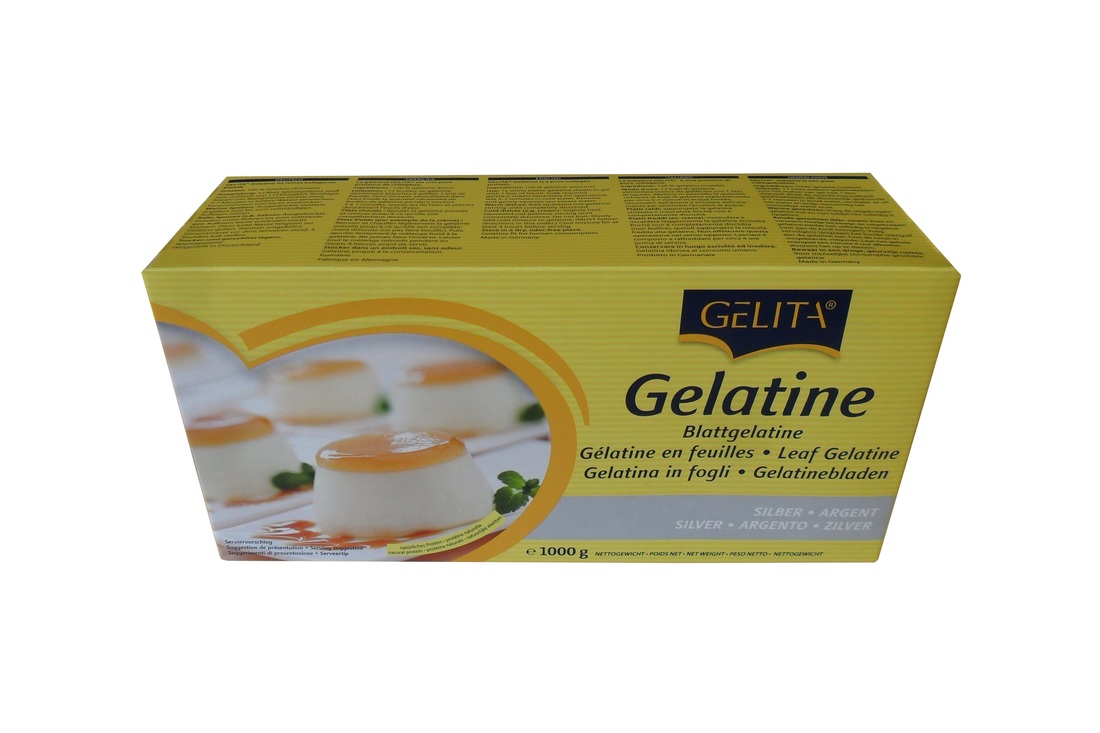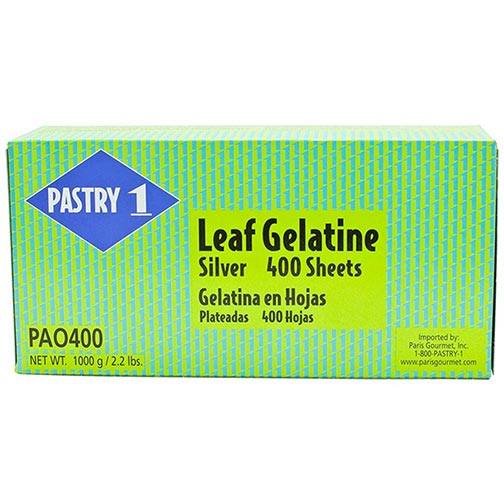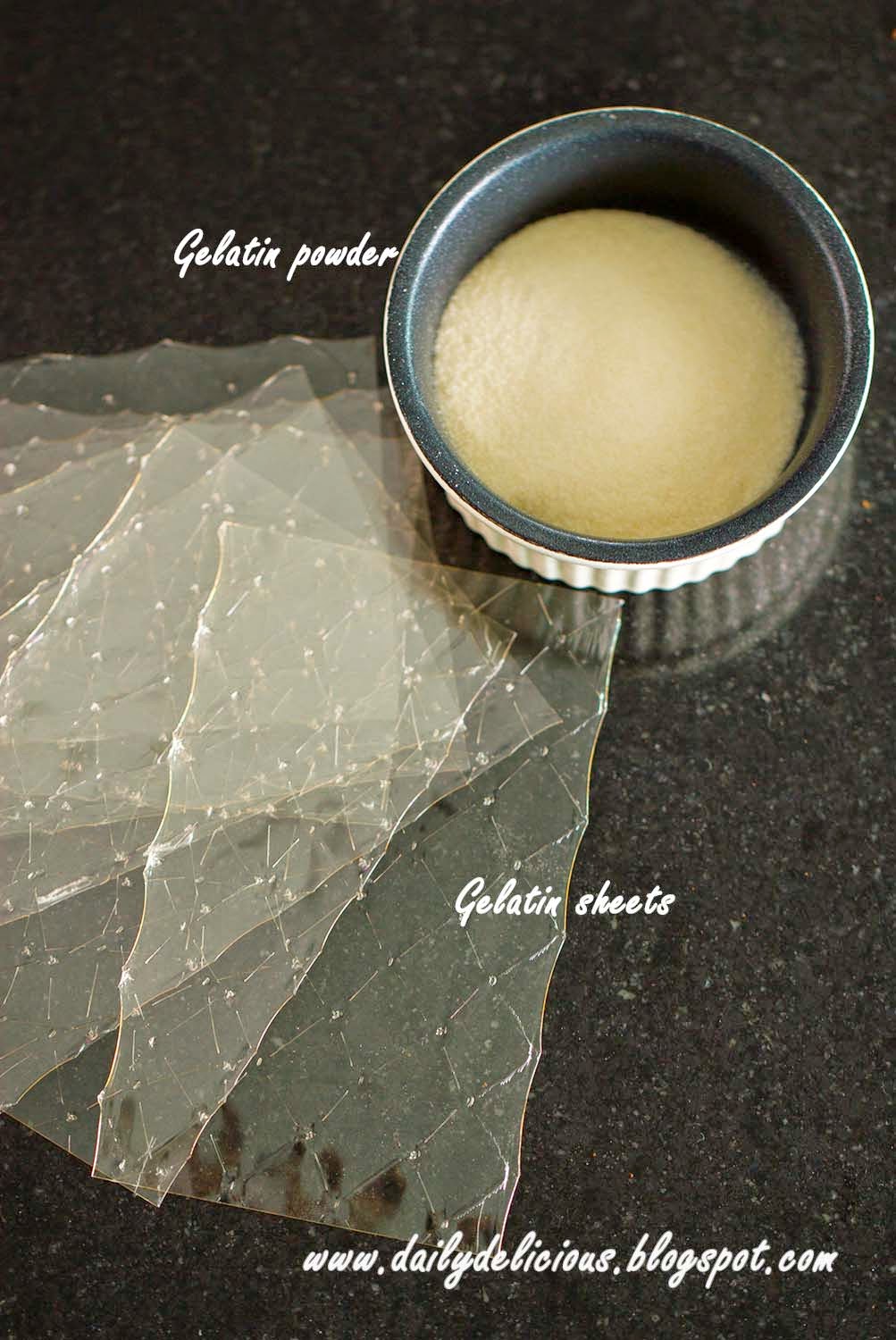
Gelatin sheets are used in both sweet and savory dishes and recipes. Do not boil, as this will cause the gelatin to lose its gelling strength. To use, add the bloomed sheet(s) to a room temperature or warm liquid ingredient and stir until completely dissolved. Gently squeeze or shake each sheet to remove excess water. Strain or drain the water and remove the sheets from the liquid. If using multiple sheets, place them in the water one at a time to ensure maximum hydration. To bloom gelatin, soak the sheet(s) in cold water for 5 to 10 minutes. This is called “blooming,” and is necessary to avoid clumping during preparation and a lumpy finished product.
#GELATIN SHEETS SILVER HOW TO#
How to Bloom Gelatinīefore gelatin sheets can be used, they must be pre-hydrated.


The weights of the sheets are different, so that 1 sheet gold = 1 sheet silver = 1 sheet bronze, making them even easier to use. Note that it is not necessary to convert between different sheet blooms, as this is taken care of in the manufacturing process. Lower blooms are ideal for creamy desserts, while higher blooms help molded or shaped dishes hold together better. The higher the bloom, the stronger and more firm the gelled product will be. This measurement is called “bloom” or “bloom strength.” Low bloom strength is under 150 and creates a soft consistency, while higher bloom strengths can go as high as 300 for stiff texture. Gelatin sheets are available in different strengths that determine the stiffness of the final product. Tropical fruits contain a natural enzyme that causes the gel to break down, and so must be cooked or at a minimum boiled for a few minutes before being added to gelatin in order to counteract the effect of the enzyme. Salt, Fructose Sugars, and Acids under 4 PH will decrease gel strength. Sugars (except fructose), Alcohol (except highly acidic wines), and Milk will increase gel strength. When working with gelatin it is important to keep in mind that certain ingredients can strengthen or weaken gel strength. Once bloomed, the hydrated leaves are added to liquid ingredients in order to create gelled or set desserts, glazes, puddings, bavarois, jellies, to make and decorate jelly cakes, and much more.
#GELATIN SHEETS SILVER PROFESSIONAL#
Gelatin sheets are easy to use and ensure that repeat recipes stay consistent, making them ideal for both professional chefs, home cooks, and institutional use.

Substitute gelatin sheets for powdered gelatin in recipes by using one sheet per half cup of liquid. Sheet gelatin will dissolve slower than powder or granules, but sheets will also help create a finished product that is clearer and more translucent. Gelatin Sheets vs Gelatin PowderĪlthough the gelatin is the same in powdered and sheet gelatin, the form helps determine how easy the ingredient is to measure and work with. The exact texture of the finished product is determined by the concentration of gelatin to liquid but is also influenced by temperature. Gelatin’s low melting point gives gelled foods a smooth, silky mouthfeel. What gelatine does in food is absorb liquid, creating a gel-like consistency. Once processed and dried, this versatile ingredient is either ground into a powder, made into granules, or formed into easy-to-use flat sheets. However, no matter what it’s called, gelatin is a pure, all-natural animal protein, most commonly made from collagen from either cows ( bovine gelatin) or pigs ( porcine gelatin). Other names for gelatin include: hydrolyzed collagen, hydrolyzed gelatine, and gelatine or collagen hydrolysate. The only difference between “gelatin” and “gelatine” is the spelling, as the two versions mean the same thing.

When added to liquids, it will absorb anywhere from 5 to 10 times its weight, creating a thick, viscous, gel-like texture that adds silky mouthfeel to the finished product. This versatile gelling agent contains no allergens, fat, or carbohydrates but is not Kosher or Halal. Gelatin is a flavorless, colorless, odorless, pure protein used to thicken and solidify liquid ingredients. Have you ever wondered how to get perfectly-textured, creamy and firm panna cotta every time? Or how to create beautifully transparent gel toppings for jelly or underwater cakes? Professional chefs, cake decorators, and commercial bakers have long known the secret thickening agent that makes set, gelled, and transparent desserts, sauces, jellies, and glazes a snap: gelatin sheets. Sheet Gelatin – What is it & How to Use it


 0 kommentar(er)
0 kommentar(er)
